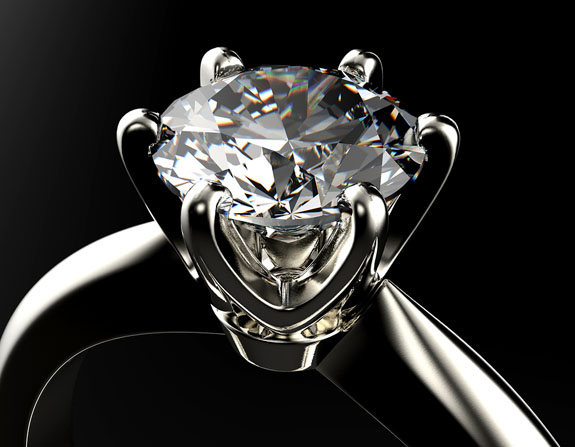In yesterday’s blog posting, infectious disease expert William Schaffner criticized an Ebola cleanup crew for incinerating nurse Amber Vinson’s ring when a simpler and more rational solution would have been to dunk the ring in bleach or a similar cleaning product.

As jewelry experts, we’d like to clarify that Schaffner's bleaching advice misses the mark. Although chlorine bleach does a great job of killing off the Ebola virus, it also — over time — wreaks havoc on ring settings, especially those made of white gold. Jewelry lovers should NEVER clean their precious possessions with chlorine bleach.
A study conducted by Hoover & Strong, a leading refiner and manufacturer of precious metals, found that household bleach, chlorine and bromine (commonly found in pools and hot tubs) caused a gradual failure of karat-gold settings, with the fastest deterioration seen when jewelry was immersed in chlorine bleach and brought to a high temperature.
Chlorine has the ability to dissolve the alloys found in white and yellow gold, ultimately causing stress cracks and breakage. Rings with prong-set stones carry the highest risk, because a single compromised prong could cause the loss of a very valuable gemstone.
In the Hoover & Strong study, 14-karat nickel white gold faired worse than other white metals. Platinum was virtually unaffected and rhodium plating added a layer of protection to the karat gold. Rated from most durable to least durable were platinum, rhodium-plated 14-karat palladium white gold, 14-karat palladium white gold; rhodium-plated nickel white gold and 18-karat nickel white gold.
Although bleach, chlorine and bromine have been proven to damage jewelry, we should stress that the effects are seen over an extended period of time.
For instance, 14-karat nickel white gold exposed to 5% chlorine bleach and heated to 110 degrees F experienced prong failure after 21 hours.
The same experiment done with 5% chlorine bleach at room temperature still yielded prong failure, but it took 120 hours of exposure.
Hoover & Strong also calculated that two hours of daily hot tub use would generate a prong failure after 156 days for a chlorine-treated tub, or 192 days for a bromine-treated tub.
Household detergent had no effects on the settings, according to the study.
So what’s the best way to disinfect jewelry? A lot has to do with the type of stone that may be in the setting.
Alcohol is a great disinfectant, but shouldn’t be used on pearls, opals, emeralds, coral or turquoise. Boiling water can kill germs and viruses, but could damage fracture-filled stones and other gems that are susceptible to cracking with drastic changes of temperature. Highly resilient diamonds, rubies and sapphires can be heated with a jeweler’s torch, effectively killing any potential contaminate.
Other industry experts recommend scrubbing the jewelry with a soft-bristled toothbrush and a simple brew of warm water and liquid dish soap.
If Ebola is on your mind, please note that the European Centre for Disease Prevention and Control claims that the Ebola virus is easily killed by soap, bleach, sunlight, high temperatures and drying. Cycling an item through your washing machine or dishwasher can also destroy the Ebola virus.
Photo: Bigstockphoto.com/Rozaliya
No comments:
Post a Comment